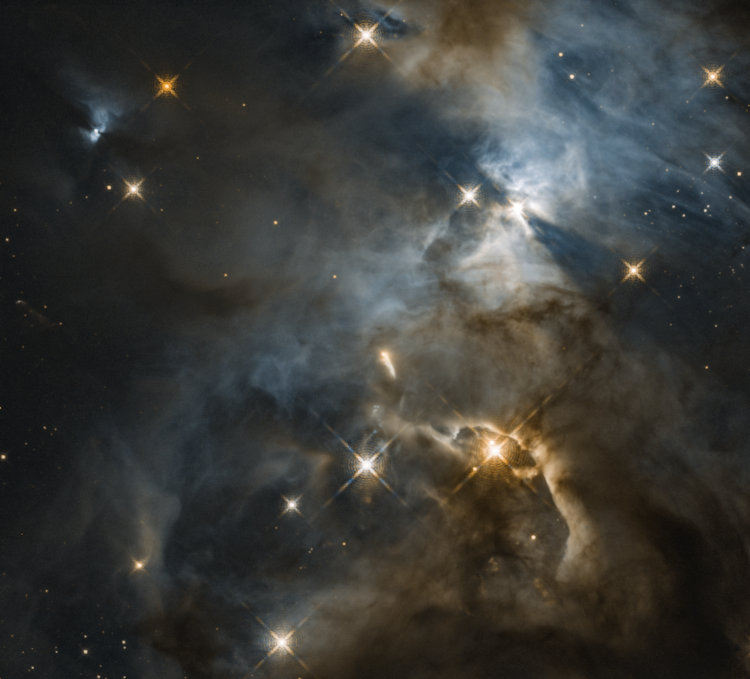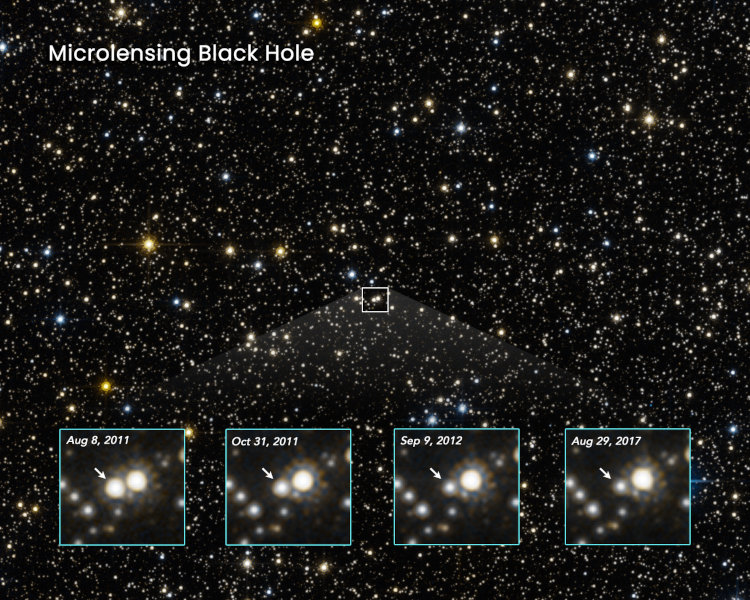That’s right, the Hubble Space Telescope (HST) was launched 33 years ago today, which makes it now a functioning adult if you’re into Tolkien – ‘course, I don’t think you can be seriously into Tolkien and a functioning adult simultaneously, which is simply an invitation to a flame war, to which I reply, Bring it,you Lazy Lobs…
All that aside, we check out a couple of things that Hubble has been up to. Clicking on these images will take you to the full-resolution versions of them, quite large.

This is region known as the Serpens Nebula, and the key focus is on a star at upper right, HBC 672 – the one that is flanked by ‘bat wings’ of shadows. Click here for their professional explanation, or see below for one from a rank amateur.
The shadow is believed to be from a planetary disk, the surrounding debris that initially provoked the coalescing of the star to begin with and will eventually form planets as the debris and dust gradually comes together under the combined gravity. The disk is presently wide and thick enough to throw a shadow from the star across the distant dust and gases of the nebula itself, even though it is too small from our vantage to make out at all. And there’s another one at upper left.
Hubble doesn’t have color sensors in its cameras, instead relying on multiple greyscale exposures through different filters, and this image utilized a near-infrared filter (among others) to bring out details not visible to ground-based scopes. Meaning, as is so often the case, that there’s no way we could achieve anything of this sort from the ground, one of the reasons that I don’t pursue astrophotography (also to include, I can’t afford to do it well, and, I live in a highly light-polluted area.) Most of the astronomical images that you see are composites of differently filtered images to bring out specific details, rendered in false colors, because this is the most effective way to pursue the science – they’re not after the aesthetics, even when occasionally we get something quite aesthetically pleasing anyway.

This one is exceptionally cool, because it shows a star brightening and then dimming from gravitational lensing because a black hole passed between it and us. See this link for a professional description, or suffer through mine below.
Here’s the deal: Gravity warps space, and light travels through space, so light traveling near strong gravitational sources gets bent a bit. Very strong gravitational sources, like clusters of entire galaxies or, in this case, a black hole, will act as lenses, distorting our view of the stars or galaxies behind said gravitational source. While most black holes that we know of occur in the center of galaxies, this is probably more a reflection of how we can detect them rather than where they can typically be found, or at least, we cannot make any conclusions about this yet. Black holes in the center of galaxies have the ability to absorb plenty of material spiraling in, and it is this influx of material as an accretion disk, jamming together in the doorway of the event horizon like The Three Stooges, that superheats it and provokes the emission of lots of high-energy particles, and this is what we can detect directly, mostly X-rays. Black holes themselves are invisible, thus the name, and so we only find the accretion disks and the effects thereof. But with too little material to form an accretion disk, there’s nothing to detect – except warping gravity. In this case, the light from the star behind the black hole, light that would normally have passed alongside us undetected, gets bent by the gravitational field around the black hole and focused more, bringing it to us. There are, of course, levels of effect – light that comes too close simply falls into the black hole, while light just a little further out gets bent so radically that it goes off in another direction entirely, but enough of it gets focused in our direction that we see the above images.
How many such black holes are out there? We really have only guesses, which we can only confirm or refute by seeing effects like this. A certain, very small percentage of the light that reaches us from ‘random’ regions of space is likely redirected by other black holes, but without as much focus and in much smaller quantities, and our optical sensors would have to be much more efficient than what we have now to pin them down. This is one of the benefits of space telescopes, because they don’t lose anywhere near as much light to atmospheric scattering as ground-based scopes.
Hubble has one hell of a history of discoveries, confirmations, and refinements that it’s added to our scientific knowledge, so be sure to wish it a happy birthday. Yet it’s an inanimate object, so the real credit goes to all of the people, past, present, and future, who worked on and with it to further our knowledge. All of you rock.




















































